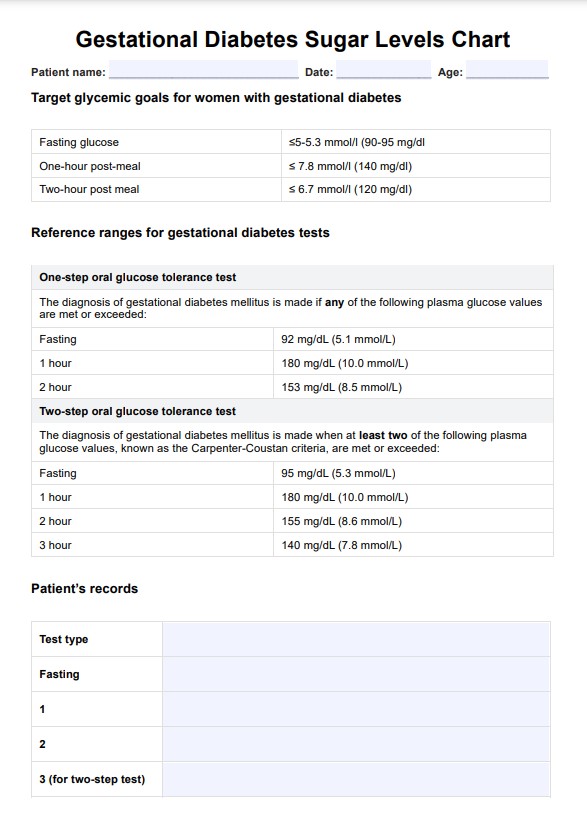For most women diagnosed with gestational diabetes, blood glucose levels should be checked at least four times a day: fasting in the morning and one to two hours after each meal. The exact frequency will depend on individual circumstances, so following your healthcare provider's recommendations is essential.

Gestational Diabetes Sugar Level
Get access to a free Gestational Diabetes Sugar Level Chart. Use it as a reference to monitor and manage your patient's blood sugar levels during pregnancy.
Use Template
Gestational Diabetes Sugar Level Template
Commonly asked questions
For women with gestational diabetes, the target fasting blood sugar level is usually below 95 mg/dl. One hour after meals, blood sugar should be below 140 mg/dl, and two hours after meals, it should be below 120 mg/dl.
The target levels may vary for each individual. However, typical recommended ranges are fasting: 70-95 mg/dL, pre-meal: 95-105 mg/dL, and post-meal: <120 mg/dL.
EHR and practice management software
Get started for free
*No credit card required
Free
$0/usd
Unlimited clients
Telehealth
1GB of storage
Client portal text
Automated billing and online payments











